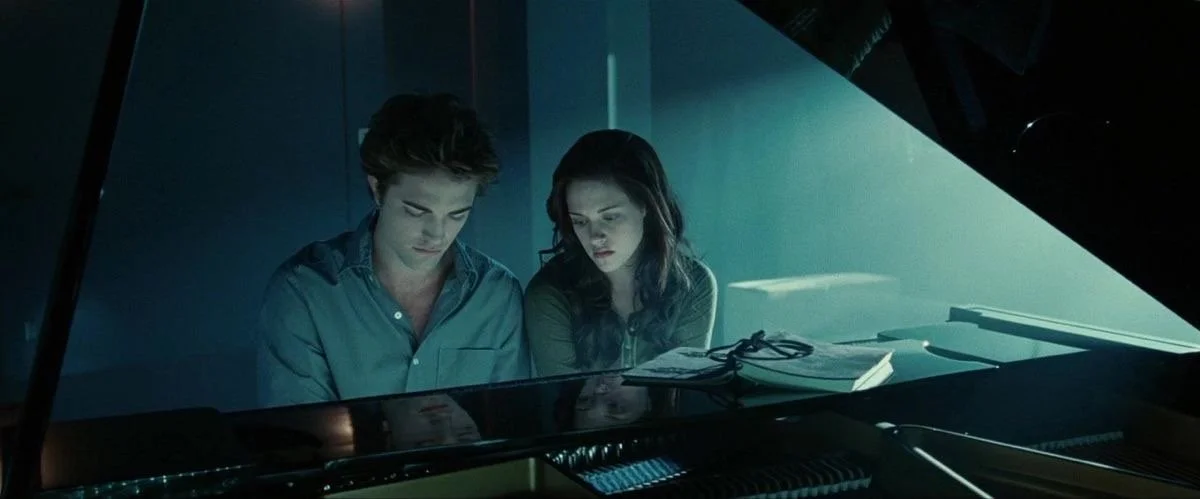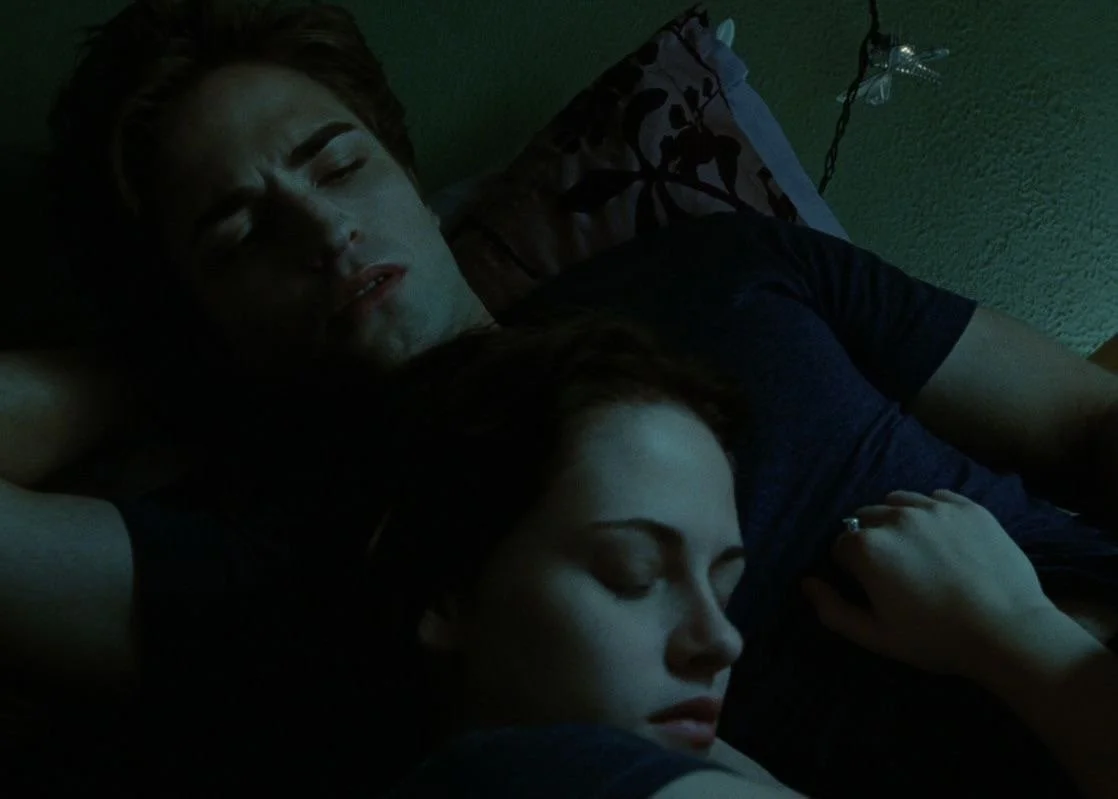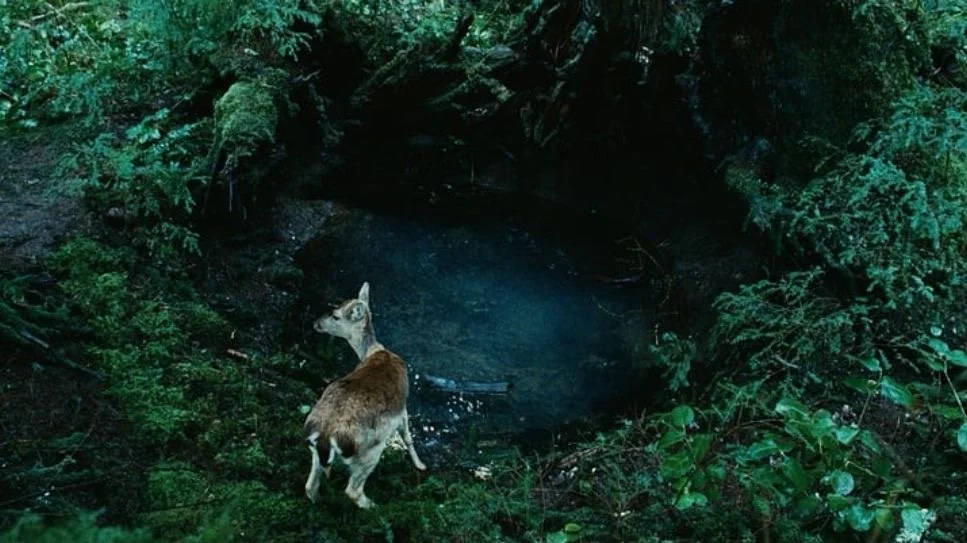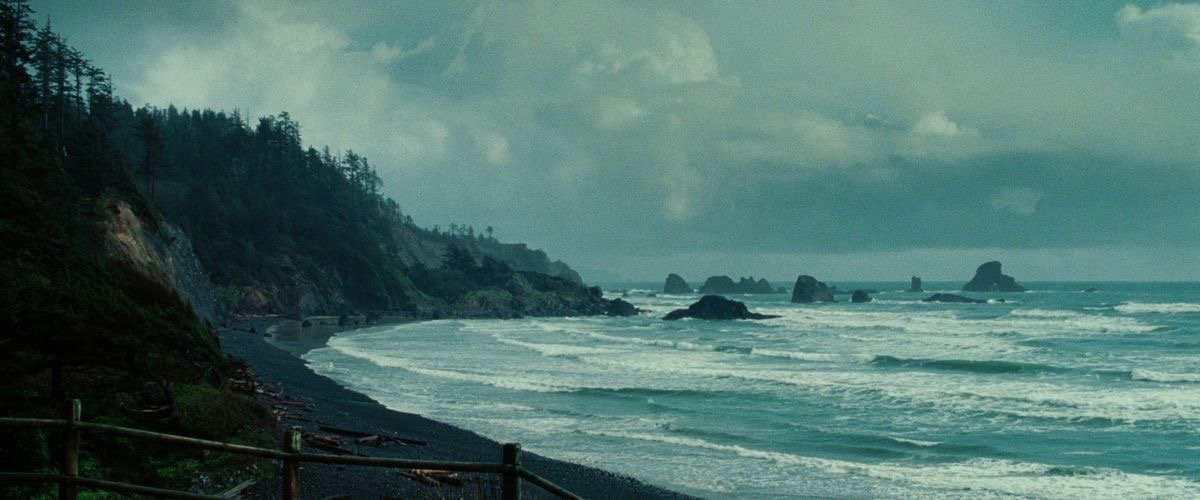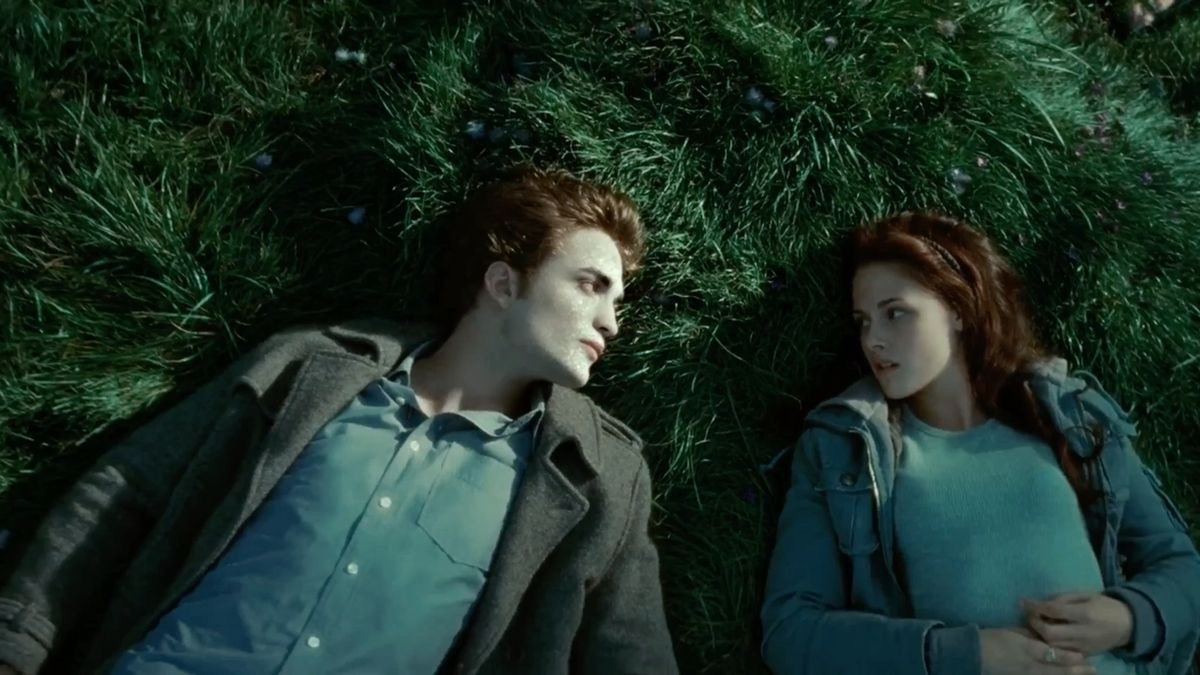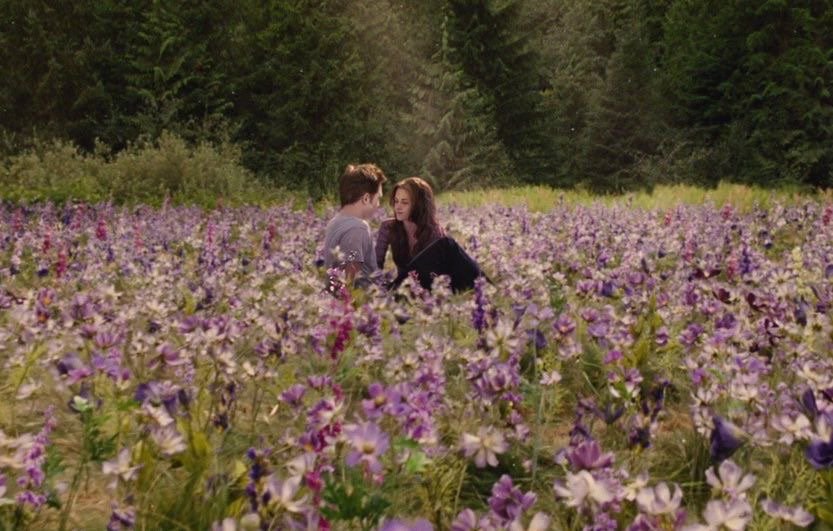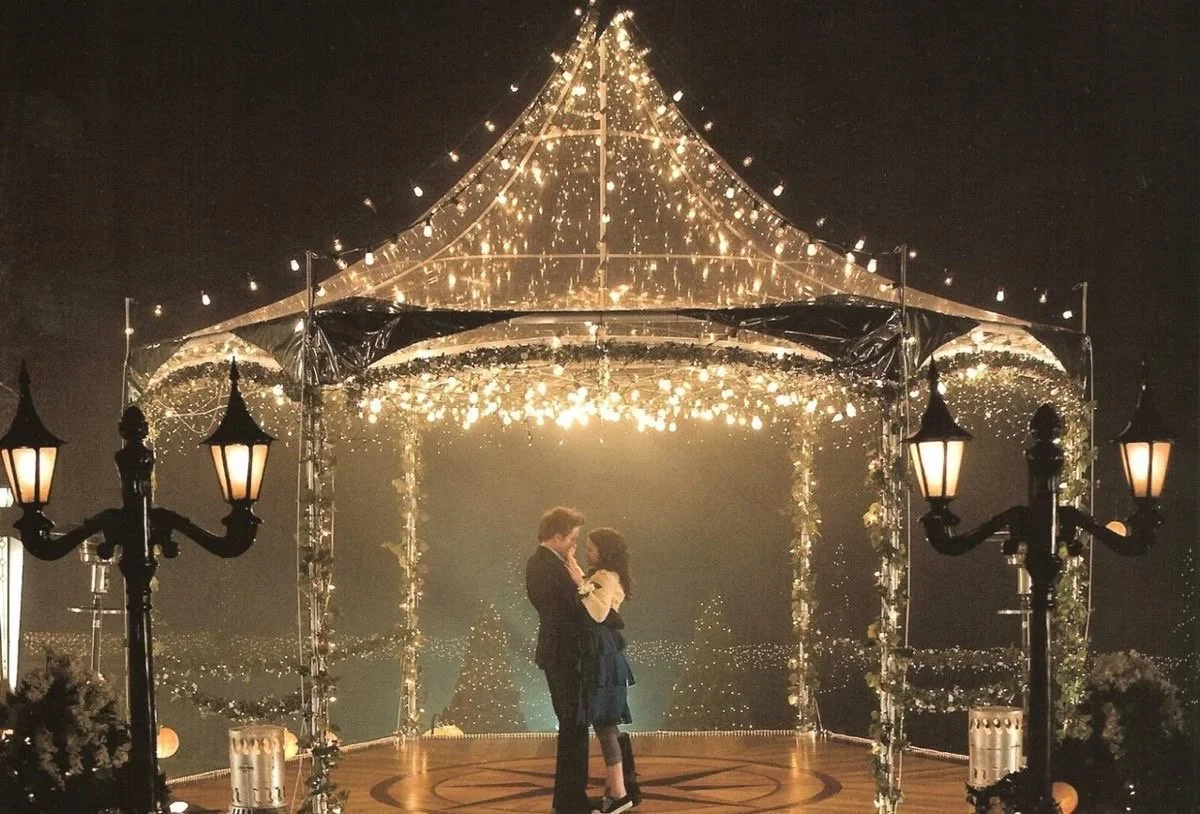20 Years of 'Twilight: The Book & Teen Romance That Changed Hollywood
It began as a moody film about a girl, a vampire, and a small town. Two decades later, it remains a blueprint for franchises, fandoms, and first loves.
By Natalie McCarty
Image Courtesy of Lionsgate
I met my first love tucked between my grandma’s photo albums and stacks of paperbacks: a glossy black notebook covered in sketches and stills. I didn’t know it yet, but Twilight: Director's Notebook: The Story of How We Made the Movie Based on the Novel by Stephenie Meyer would change the way I saw stories forever.
Long before I had even seen the movie, I flipped through its pages again and again, tracing the muted colors, the misty forests, the storyboards that showed how each scene was built frame by frame. I didn’t know the actors’ names, or the cultural storm it would ignite, but I knew I had found something that would capture me completely. That book sparked my love for movies, and I knew before I had even seen the final product that I wanted to be part of making things just like it.
Image Courtesy of Lionsgate
Over the years, every boyfriend (sorry), every friend, even my mom and brother, have sat through countless Twilight marathons with me. Straight up, I’ve logged the first film more than fifty times on Letterboxd alone. What can I say? I’m an enthusiastic fan, and it’s not just me who is!
Image Courtesy of Lionsgate
You know, they say that you only turn 20 once, unless you’re a vampire. And today, the Twilight book celebrates its 20th birthday in style. To celebrate, I went to Twilight: Live in Concert by Candlelight at the Wiltern Theatre in Los Angeles. The line wrapped around the block twice, filled with fans in Cullen-inspired attire, velvet capes, and nostalgia for the 2008 world that had first captivated them.
Standing there, I found myself asking the same question I had as a kid flipping through that notebook: what is it that makes Twilight endure? Is it the forbidden love story at its heart? The infamous blue tint that cloaked Forks, Washington, in endless overcast? The dialogue—awkward, yet endlessly quotable? Or is it something harder to name… a feeling, a spark, a world that somehow felt like it could be ours too?
Image Courtesy of Lionsgate
Part of it was timing. In 2008, Twilight arrived as a phenomenon that reshaped teen cinema. Robert Pattinson and Taylor Lautner were brooding, magnetic heartthrobs who inspired teams, fan art, and endless speculation. Kristen Stewart, in her quiet, awkward, charming intensity, gave teenage girls a heroine they could truly see themselves in: a protagonist who felt human, flawed, and real.
What I didn’t realize at the time—and what still surprises me looking back—is how indie that first film really was. Catherine Hardwicke shot it with grit and sincerity on a modest budget, letting the gray drizzle of the Pacific Northwest mirror teenage isolation and longing. That rawness, combined with an intimate storytelling sensibility, turned what could have been a simple teen romance into something urgent and alive. And then, that quiet, indie experiment exploded, growing into one of the most lucrative franchises of the 2000s. Without Twilight, would studios have risked The Hunger Games, Divergent, or the current wave of female-led YA adaptations? (I’m looking at you, The Summer I Turned Pretty.)
Image Courtesy of Lionsgate
The soundtrack mattered just as much as the story. Paramore, Muse, and Iron & Wine—they were anthems for a generation, echoing through bedrooms, burned CDs, and first-crush playlists. At the concert, listening to Carter Burwell’s original score and the curated soundtrack (complete with Debussy’s “Clair de Lune”), I felt that same ache I had in middle school, staring out car windows and imagining myself in Forks.
The fandom, the filmmaking, and the music weren’t separate. Together, they created a universe that felt alive and endless. Two decades later, it is this precise combination that helps Twilight be remembered, not for its perfection, but for its sincerity. The blue tint, the awkward lines (and occasionally bad acting), the melodramatic earnestness have all just become part of its charm. The movie is as endlessly rewatchable as it is culturally unforgettable. The saga continues to evolve, too, even in internet culture, for future generations who carry the torch (and kudos to whoever runs the Lionsgate Twilight socials).
Image Courtesy of Lionsgate
For me, that notebook and that film taught me that storytelling is layered: design, vision, and choice are just as important as the final image on screen. Twilight gave me a first creative ambition, yes, but it also gave me a blueprint for how I wanted to make stories myself. It’s weird, I know, but it’s my story. And yes, I might just have to get a full-body tattoo to commemorate my love for it (kidding… mostly).
As a kid, I was learning how much a story could take over your world. Now, I see how Twilight shaped the way I dream, the way I create, and the way I understand love. I’ve loved a man the way Bella loved Edward, and I’ve loved a man the way Jacob should have been loved (I said it!). And though I’ve never been to Forks, maybe that’s why, twenty years later, every time I hear the opening notes of “Bella’s Lullaby” or see the world through that misty, blue-hued lens, I feel that spark all over again—like meeting my first love for the first time.
Twilight is a reminder that a story told with heart can change how we dream, create, and love. Vampires, awkward dialogue, and all, it still sparks that same magic, even twenty years after the book first landed.
Image Courtesy of Lionsgate

